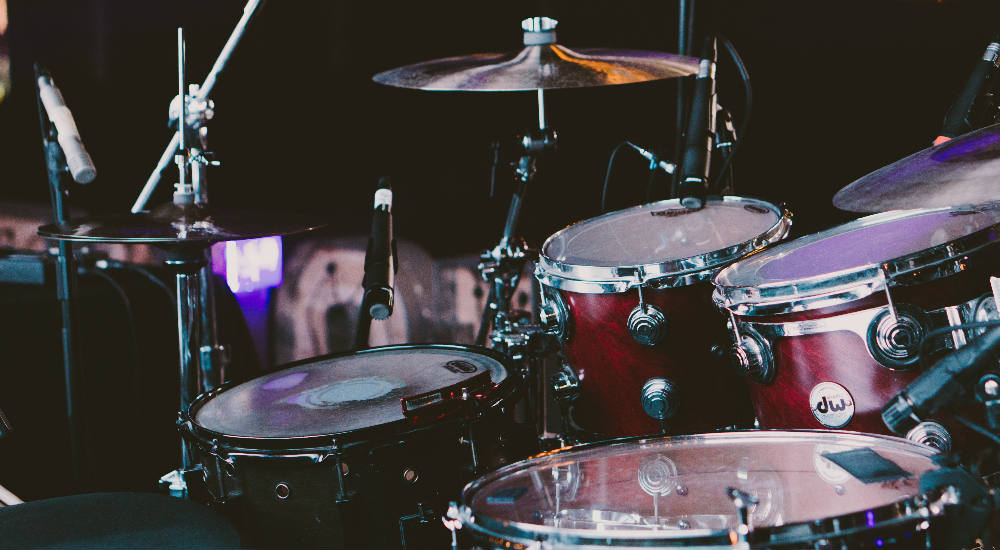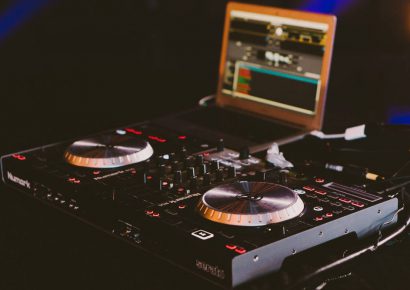As always, the idea is pretty simple in theory but it can get a little hairy at times. For the sake of simplicity however, I’m using paradiddles as the main exercise for the hands. I’ve split this concept into two subdivisions – eighth-note triplets and semiquavers (16th notes) and the sticking (or footing if you like) for the ostinato is simply one in the left foot and two in the right (Hats, Kick, Kick).

In Figure A we see that we have a three-note figure that works perfectly for triplets and leads with the left foot on the hi-hats giving us a good downbeat, which you can lock into when attempting to play this. Once you’re comfortable with getting the feet going, you need to attempt to play something with the hands. Begin with just playing single strokes on the snare drum (Figure B). If this is still hard, perhaps try crotchets with each hand, and work your way up from there. If you get to the point that the singles are working, try adding a couple of accents and see where that takes you.

At Figure C, I’ve used a single paradiddle with an accent (RLRR LRLL). This is obviously a four-note based rudiment so you’ll see that the accent shifts throughout the figure as we’re playing over groupings of three notes. Figure D uses a double paradiddle (RLRLRR LRLRLL). This is based on six notes and as such, works nicely over these triplets. At Figure E, we have a triple paradiddle (RLRLRLRR LRLRLRLRR) and by now, you’re probably getting the idea – forget about your feet and play accented patterns in the hands. If you’re getting comfortable, try to mix and match the paradiddles at will, put the accents onto the toms or add more accents within the paradiddle.

Figure F is where it starts to get a little hairy because now, we’re basing everything on 16th notes and as such, our feet are playing groups of three over four so the hi-hat (or our original downbeat) now shifts. This takes a little time to get used to, so playing a crotchet on the ride cymbal for some reference is a good way to begin or maybe eighth notes or something to feel the figure. When you’re starting to get it, as before, try some single strokes over the shifting foot pattern (Figure G). Then you can attempt the three paradiddles to take things further (Figures H-J).

When I’m playing these, I’m trying not to think about my feet too much, they should really be on autopilot as there’s just too much to think about at once, especially at faster tempos. If this concept isn’t something you’ve experienced, just think – do you think about your feet when you walk? No, it’s purely subconscious and as such, when we play drums, this can be the same. You’ll also notice that there’s no repeats at the ends of these figures because they’ll keep on going, only resolving back to the ‘start’ during the bar. You can work it out if you wish, but really just work on what your hands are doing rather than your feet.
As mentioned, this idea can be mucked around with till the cows come home and how far you take it is really up to you. I’ve also experimented with holding a steady ride pattern and improvising patterns on the snare drum. If you have a double pedal you can also try placing your left foot over both the hi-hat and left bass drum pedals so that you end up with no gaps in the bass drum part at all – and I have to admit, this sounds pretty cool. You could also try doing other possible combinations in the feet (RRL, RLR, LLR, LRL, RLL) and base all the exercises on these. Either way, this idea would make for an interesting set of fills or a great soloing concept to base some ideas on. I’ve seen masters like Dennis Chambers and Dave Weckl use this idea before so make sure you check them out for inspiration, and have fun.







